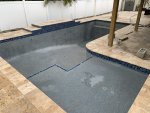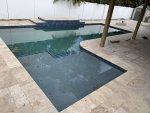- May 17, 2017
- 181
- Pool Size
- 11300
- Surface
- Plaster
- Chlorine
- Salt Water Generator
- SWG Type
- Pentair iChlor 30
I am preparing for a brand new pool completion by March. I have the screen and the pebble tec to be installed this week. Its about time we as first time pool owners prepare for the care and maintenance of our new pool.
I plan on taking care of the pool myself. I dont know much about pool equipment and operation. I have a little knowledge of water chemistry from my above ground past ventures. I am however handy with everything home related and am sure it will be a matter of time, so the 1 month of pool school included with my new pool by the builder will be my only official education.
The pool comes with an automatic pool cleaner, not sure which, but what are some of the things I will also need to have on hand to take care of the pool properly? Chemicals, Test kits, and even accessories ideas like towel racks brushes/brooms ect.
Thanks for any advice
I plan on taking care of the pool myself. I dont know much about pool equipment and operation. I have a little knowledge of water chemistry from my above ground past ventures. I am however handy with everything home related and am sure it will be a matter of time, so the 1 month of pool school included with my new pool by the builder will be my only official education.
The pool comes with an automatic pool cleaner, not sure which, but what are some of the things I will also need to have on hand to take care of the pool properly? Chemicals, Test kits, and even accessories ideas like towel racks brushes/brooms ect.
Thanks for any advice



